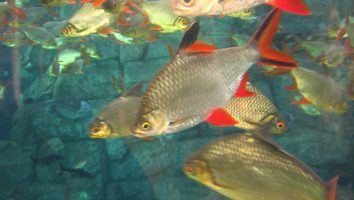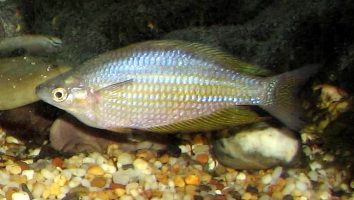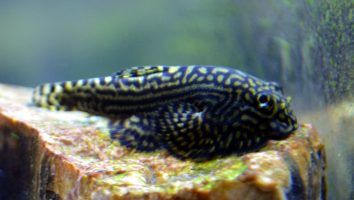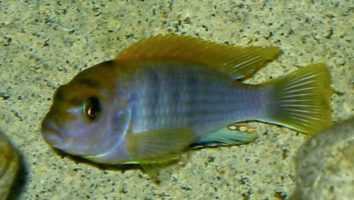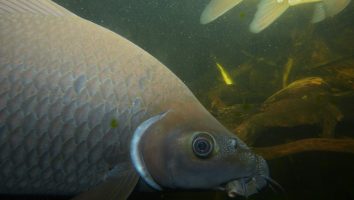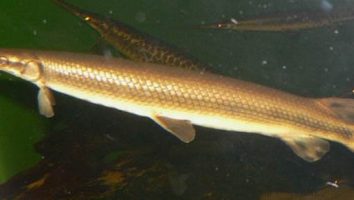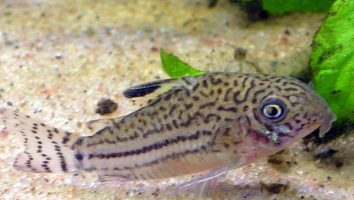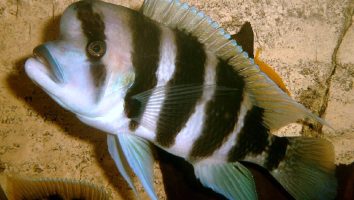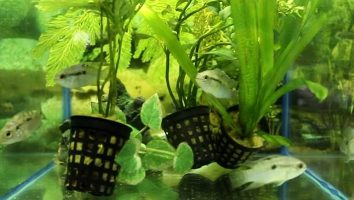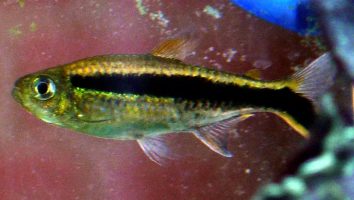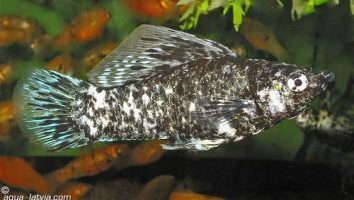The yoyo loach is a freshwater fish that is native to Southeast Asia. They are a popular choice for aquariums because of their playful nature and bold coloration.
This guide will teach you everything you need to know about yoyo loach care. You’ll learn about their diet, tank mates, size, and more!
Table of contents
Species overview
The yoyo loach (scientific name: Botia almorhae) is a type of freshwater fish that’s native to parts of India and Pakistan.
They prefer slower-moving waters with a lot of plants and vegetation. This is something common to many species of loach (such as the kuhli loach). Although this is where they’re most comfortable, yoyo loaches have no trouble surviving in a wide range of other water conditions.
Yoyo loaches are a popular choice for aquariums because of their playful nature. They are constantly on the move and love to play with their tank mates. They are also very good at eating algae, which makes them a valuable addition to any aquarium.
Appearance
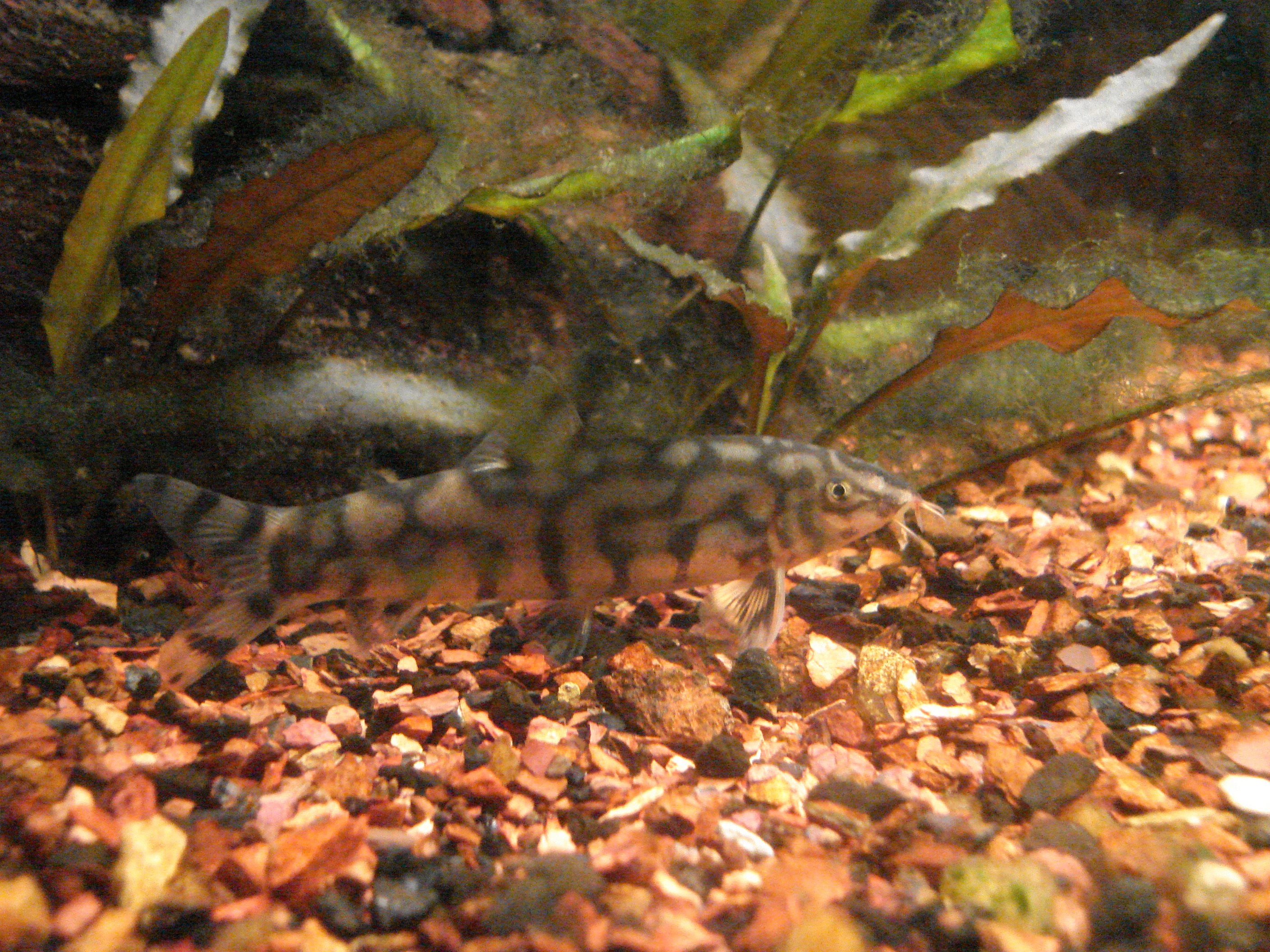
These bottom-dwellers are easily identified by their unique shape. They have a long and slender body that tapers down at the end. The front half of their body is very flat while the back end is slightly rounded. This gives them a bit of a disk-like shape overall.
The majority of their body is a light brown color. The brown is broken up by a series of dark vertical stripes that run the length of the fish.
The fins on a Yoyo loach are all relatively small. They have a dorsal fin that’s located about two-thirds of the way back on their body. This fin is followed by a similarly sized anal fin.
Their pectoral and ventral fins are located towards the front of the fish and are used for navigation.
At the back end of the Yoyo loach is their caudal fin. This fin is forked and slightly taller than their other fins.
One thing you might notice about this fish is that they have two barbels on their chin. These are used for sensing their surroundings and for finding food.
Lifespan
In the wild, yoyo loaches typically live for 5 to 8 years. In captivity, with proper care, they can live much longer—anywhere from 10 to 15 years is not uncommon.
Size
The maximum size for a yoyo loach is about 4 inches, but they are usually closer to 2.5 inches in the aquarium.
Tank
Tank Size
The minimum tank size for yoyo loaches is 20 gallons. If you’re looking to keep a school of yoyo loaches, you’ll need an even larger tank as they do best in groups of 3 or more fish.
A 30-gallon tank is a good starting point for a small school of yoyo loaches but you may need to go even larger depending on how many fish you want to keep.
Water Parameters
The yoyo loach prefers water on the cooler side. They’re most comfortable between 68 and 77 degrees Fahrenheit.
pH levels should be between 6.0 and 7.5. This is on the lower side, but not so low that you need to take any special measures to maintain it.
As for hardness, the yoyo loach can adapt to a wide range of water conditions. They’re found in everything from soft water to hard water. A general range of 4 to 12 dGH is fine.
Alkalinity isn’t as important as the other parameters, but the yoyo loach does prefer water that’s on the lower side. A range of 4 to 8 dKH is ideal.
- Water Temperature: 68-77 degrees Fahrenheit
- pH Levels: 6.0-7.5
- Water Hardness: 4-12 dGH
- Alkalinity Levels: 4-8 dKH
What To Put In Their Tank
When it comes to setting up the inside of your aquarium, the options are pretty much endless. It really depends on what you want to put in there and how you want your fish to interact with it.
That being said, there are a few things we recommend for any Yoyo Loach tank.
The first is a good quality gravel or sand substrate. These fish love to dig and will do so frequently. A softer substrate will be much more comfortable for them and reduce the risk of any cuts or scrapes.
The second is some form of plants. These can be real or fake, it doesn’t matter. Yoyo Loaches love to hide in and around plants. Not only that, but the plants help oxygenate the water which is good for everyone.
Java fern, hornwort, and water wisteria are all great choices.
The third is some driftwood or rocks. These provide hiding spots and help break up the line of sight in the tank. This is especially important if you have other fish that might be aggressive towards your Yoyo Loaches.
And that’s really it! These fish don’t need anything fancy or complicated. Just a few basic things to make them feel at home.
Common Diseases
The yoyo loach is a pretty hearty fish, but that doesn’t mean they can’t get sick. In fact, there are a few diseases that seem to target this species specifically.
The first one is called “the bends”, and it’s caused by a sudden change in water pressure. This can happen if you move your fish from one tank to another (like if you’re transporting them somewhere) or if you change the water in their tank too quickly.
The bends will cause your fish to swim erratically and may even make them float to the surface of the water. If you notice this happening, you need to act fast.
The best way to treat the bends is by slowly acclimating your fish to the new water conditions. This can be done by floating them in a bag in the new tank for 30 minutes, then slowly adding tank water to the bag over the course of an hour.
After that, you can release them into the tank. This acclimation process needs to be done slowly to avoid shocking your fish.
The other disease you need to watch out for is white spot disease (also known as ich). This is a pretty common disease that can affect any freshwater fish, but it seems to target yoyos more than most.
The most obvious symptom of white spot disease is, you guessed it, white spots on the body and fins of your fish. These spots will eventually turn into sores, and if left untreated the disease can be fatal.
Fortunately, white spot disease is relatively easy to treat. There are a variety of over-the-counter treatments available, and most of them are effective.
The best way to avoid these diseases is by keeping your yoyo loaches in a tank with clean, stable water conditions. A well-maintained tank will go a long way in keeping your fish healthy and disease-free.
Behavior & Temperament
The yoyo loach is a peaceful fish that does best in a community tank. It is an active fish that loves to play. It is also a very social fish that does best when kept in groups.
The yoyo loach is a bottom dweller and does best in a tank with a sandy substrate. It loves to burrow and will often create small tunnels. The yoyo loach is also a great algae eater.
The yoyo loach is a very active fish and loves to play. It is also a very social fish that does best when kept in groups.
Tank Mates
The yoyo loach is a peaceful fish that does well in community tanks. They’re not aggressive and usually leave other fish alone.
This species is also social, so it does best when kept in groups of 3 or more. If you keep them in pairs or singly, they might become shy and stressed.
As for tank mates, the yoyo loach can get along with most fish. They’re not picky and do well in a variety of setups.
Some compatible species include:
- Tetras
- Guppies
- Mollies
- Platies
- Swords
- Rainbows
- Corydoras
- Loaches
Breeding
Breeding yoyo loaches can be challenging, but it’s definitely possible with the right setup and some patience. These fish are native to Southeast Asia and prefer to live in slow-moving, heavily-vegetated waters.
To recreate their natural habitat, you’ll need a tank that’s at least 50 gallons. Fill it with soft, slightly acidic water. Then, add plenty of live plants and some driftwood for hiding places. Keep the water temperature between 74 and 82 degrees Fahrenheit.
The next step is to sex the fish. Males and females look very similar, but males tend to be a bit larger. You may also be able to see the male’s genital papilla, which is a small tube-like protrusion.
Once you’ve sexed the fish, it’s time to add them to the tank. For breeding purposes, you’ll need at least four fish. Two males and two females is the ideal ratio.
Give the fish time to acclimate to their new environment. Then, start feeding them a variety of live foods. Bloodworms, black worms, and brine shrimp are all good options.
If everything goes according to plan, the females will start to swell with eggs. At this point, you’ll need to remove the males from the tank. The females will lay their eggs on the plants, and the males will eat them if they’re not removed.
Eggs usually hatch within 24 hours. The fry will feed on the Infusoria that’s in the water. You can supplement that diet with baby brine shrimp or crushed-up flakes.
As they grow, you can gradually introduce them to larger foods. Yoyo loaches are fully grown at around 4 inches.
Conclusion
The yoyo loach is a great fish for beginners and experienced aquarists alike. They’re easy to care for, peaceful, and make a great addition to any community tank.
While they’re not the most exciting fish in the world, they’re definitely a solid choice for anyone looking for a low-maintenance pet.
If you’re looking for a fun and easy fish to care for, the yoyo loach is a great choice!

